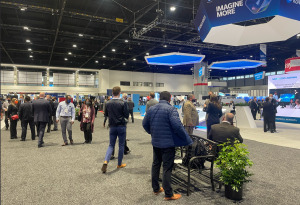by
John W. Mitchell, Senior Correspondent | December 14, 2021
From the January/February 2022 issue of HealthCare Business News magazine
Repeat exams and associated image quality issues lead to extra costs for providers and extra dose exposure for patients, but with a few tweaks to your CT exam routine, you can save time, money, and improve outcomes.
Repeat CT scans during the same patient visit are occurring every day at most medium-to-large sites, according to Timothy Peter Szczkutowicz, Ph.D., associate professor at the University of Wisconsin Madison (UWM) Department of Radiology, spoke in an RSNA 2021 session on behalf of the American Society of Radiologic Technologists entitled "How CT Protocols Affect Technologist Repeat Rates, Throughput, and Image Quality.”
“For a helical scan, which makes up most of the bread and butter that we all do on a day-to-day basis, we're looking at [repeat] rates of 1-2%, which may not seem like a lot. But [for] anyone scanning 100 patients a day across your institution that means every day you're having to repeat scans," said Szczkutowicz, who is also the author of the CT Handbook: Optimizing Protocols for Today’s Feature-Rich Scanners (2020).
These rates were based on research he and his colleagues conducted looking at two hospitals, both academic and rural. Although it has been a few years since that study was published, he said the same repeat rates on the same visits have been verified at hospitals at multiple sites in Europe and the Middle East. Other studies have yielded findings of up to 13% repeat rates on head exams.
He said common causes of CT repeat exams include:
The patients can’t or won’t lie still: Movement causes motion streaking artifacts. This complication is especially prevalent with noncooperative ED patients.
Poor contrast enhancement: Szczkutowicz cited pulmonary scans as a prime example of contrast inconsistency.
Bariatrics patients don’t optimally fit into the scanner: Overweight and obese patients are harder to scan and often must be rolled into multiple positions to capture the ordered views.
Tech inexperience or errors: These occur if the operator did not capture the entire scan field and a supplemental scan is required. Another common mistake is that metal items, such as earrings, are not removed before the scan.
Type of scan: Some scans are just harder to capture. For example, Szczkutowicz said it sometimes takes "magic" to capture a cardiac scan, and some techs are better at it than others. This is due to the precise motion of the vessels.
Szczkutowicz, who has developed CT protocols with his UWM colleagues that have been distributed to more than 2,000 sites globally, added that not all repeat scans are bad.
